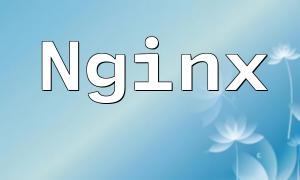Complete Guide to PHP WebSocket Development: Key Optimization Techniques and Efficient Implementation Strategies
M66
2025-06-23
Introduction and Advantages of PHP WebSocket
PHP WebSocket is a web-based real-time communication protocol that supports two-way real-time data transmission between servers and clients. Compared to traditional HTTP protocols, WebSocket features low latency, high efficiency, and low resource consumption, meeting the growing demand for real-time interaction on the internet. To ensure high performance and stability of WebSocket applications, mastering effective optimization techniques and strategies is essential.
Architecture Design and Concurrency Handling
The architecture design of WebSocket applications directly impacts system scalability and maintainability. It is recommended to adopt multi-process or multi-threaded approaches to handle concurrent requests, fully utilizing server resources and enhancing concurrency capacity. Introducing load balancers to distribute requests across multiple servers also significantly improves overall performance and availability.
Database Access Optimization Strategies
Real-time communication applications have high frequency of database reads and writes, making database access optimization crucial. Common approaches include creating efficient indexes, using partitioned tables, and caching mechanisms. Selecting an appropriate database engine also boosts performance—for example, using Redis as a caching database can greatly speed up data access and reduce database load.
Frontend Performance Optimization
Reducing frontend network load is key to improving overall user experience. Methods include compressing HTTP requests, merging CSS and JavaScript files, and using Content Delivery Networks (CDN) to reduce resource sizes. Additionally, caching static resources on the client side to avoid repeated loading effectively decreases network requests and speeds up loading times.
Code Performance and Caching Optimization
Use profiling tools to analyze code performance and locate bottlenecks, then optimize frequently executed critical code sections to reduce execution time. Efficient caching of commonly used data or computation results prevents redundant calculations and database queries, thereby improving response efficiency.
Error Handling and Asynchronous Processing
Timely capturing and managing exceptions ensures stable application operation. Detailed logging aids in troubleshooting. For time-consuming operations, asynchronous processing mechanisms enhance system throughput and prevent blocking the main thread.
Performance Testing and Stress Testing
Performance testing is a vital step to identify system bottlenecks. Tools such as Apache Bench and JMeter can simulate high concurrency scenarios to evaluate system performance and stability. Based on test results, continuous tuning and optimization help ensure the application remains efficient and stable under heavy load.
Conclusion
Mastering optimization techniques and strategies in PHP WebSocket development—including reasonable architecture design, database and frontend optimization, code performance enhancement, error handling, and performance testing—can significantly improve the performance and reliability of WebSocket applications. Through ongoing iteration and optimization, developers can create efficient and stable real-time communication services.









